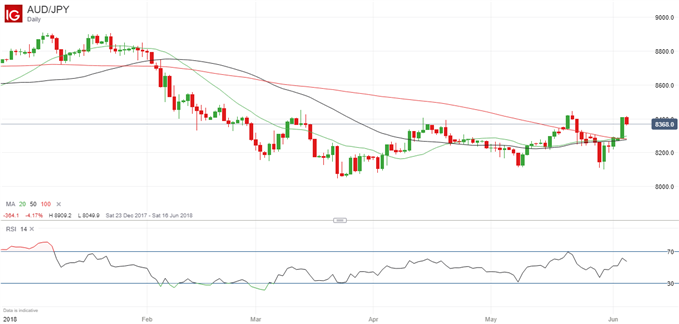
Market sentiment analysis and talking points:
– Market confidence is improving as traders look to the global economy rather than trade wars.
– However, so far, the move from safe havens into more risky assets has been relatively light.
The DailyFX Q2 Trading Forecasts for all major currencies, commodities and indices are now availabletodownload to help you make more informed trading decisions.
Trader confidence recovers
Investors are gaining in confidence, moving from safe-haven assets such as the Japanese Yen, the Swiss Franc, gold and US Treasuries into assets seen as riskier and potentially more profitable. However, the rally in market sentiment remains fragile.
This can be seen in the chart below of the Australian Dollar against the Japanese Yen, which is regarded widely as a good indicator of confidence. It has begun to rally but is still well below the peaks reached earlier this year.
AUDJPY Price Chart, Daily Timeframe (Year to Date)

On the plus side, a good US jobs report and easing concerns about the Italian political situation have boosted sentiment. However, Brexit remains a worry and there is some nervousness ahead of the June 12/13 Federal Reserve meeting, where US interest rates are expected to be increased.
You can find out more by checking out the IG Client Sentiment data.
Resources to help you trade the forex markets
Whether you are a new or an experienced trader, at DailyFX we have many resources to help you: analytical and educational webinars hosted several times per day, trading guides to help you improve your trading performance, and one specifically for those who are new to forex. You can learn how to trade like an expert by reading our guide to the Traits of Successful Traders.
— Written by Martin Essex, Analyst and Editor
Feel free to contact me via the comments section below, via email at martin.essex@ig.com or on Twitter @MartinSEssex